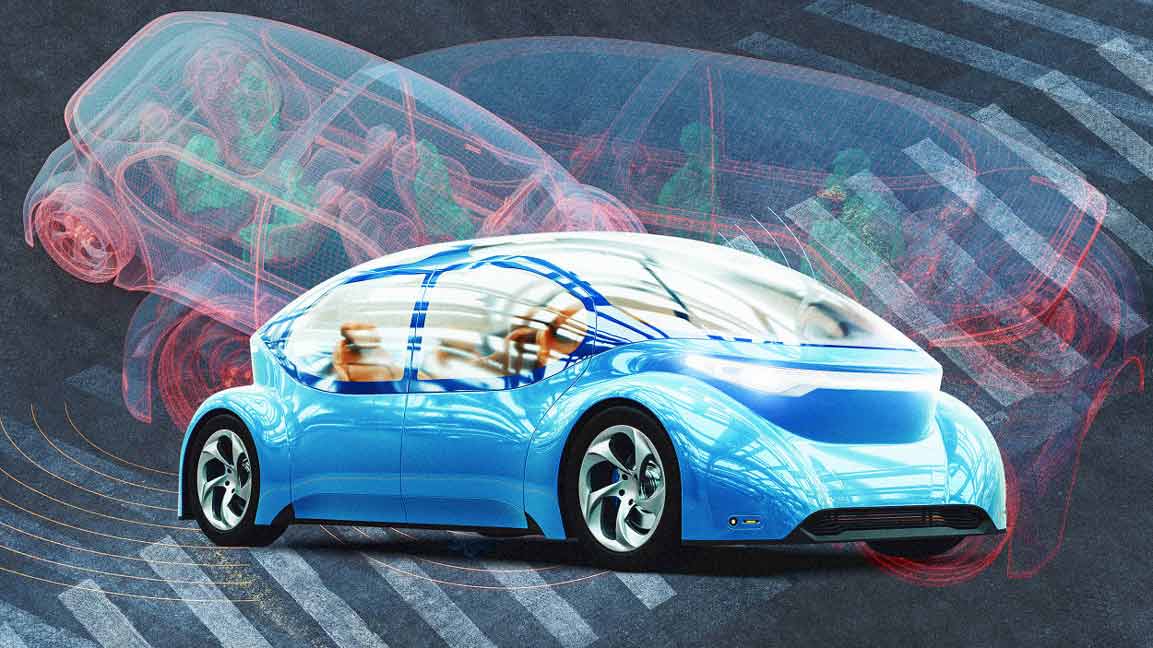- | 9:00 am
This is the key to getting more electric vehicles on the road
Digital twin technology is one innovation that can help address many of the EV ecosystem’s problems and shift adoption out of the slow lane.

Electric vehicles (EVs) have long been heralded as the future, with mandates in place across the globe to achieve zero-emission transportation. And EVs are becoming more commonplace, with the International Energy Agency expecting global EV stock to exceed $350 million by 2030.
However, before mass adoption is a reality, some fundamental challenges exist, including overcoming safety, security, and sustainability concerns.
Digital twin technology is one innovation that can help address many of the EV ecosystem’s problems and shift adoption out of the slow lane. A digital twin is a virtual replication of a physical system that is used to run simulations, analysis, and monitoring. The model uses data from sensors and other sources to create an emulation to test how the actual system will behave under different conditions. As a result, issues are detected and solved before a physical product goes into production, saving valuable time and money.
So how can digital twins be deployed to help address industry concerns and accelerate the transition to EVs?
SECURITY
Connected cars create an array of new opportunities for bad actors, with every aspect of the vehicle linked to various computer-based subsystems. From infotainment to engine control units to steering columns and brake lines, the links create a broad attack surface for hackers to exploit.
For example, Advanced Driver Assistance Systems (ADAS) require more sensor input, process more data, manage more connections, and are more prone to security vulnerabilities. Each point of connectivity leaves the car potentially vulnerable to attack.
By deploying a digital twin, development teams can emulate the behavior of systems within the EV ecosystem to spot potential vulnerabilities or weaknesses that hackers could exploit. Manufacturers can simulate a variety of scenarios and stress tests to identify security issues and implement measures to mitigate them before the EV goes into production.
The stress tests help ensure the vehicle is as secure as possible, reducing the risk of a successful attack. In addition, the development teams can use the virtual model to evaluate the security of the EV ecosystem to ensure that elements, including the charging infrastructure and payment systems, don’t introduce vulnerabilities. Following a zero-trust security strategy is nonnegotiable for the EV industry.
Once the EV is on the road, the digital twin still plays a vital role. With frequent system and software updates, the application can continuously monitor performance and detect any new anomalies or weaknesses that could become a security vulnerability. The emulation allows problems to be resolved before they come to fruition, reducing the risk of a security breach.
SAFETY
The digital twin can evaluate and confirm that standards and interoperability are met for all plug-and-charge services. Ensuring battery safety is critical and the model can test that it will not malfunction or overheat under every possible scenario. Continuous testing can help avoid recalls due to safety concerns, as was the case with the Mustang Mach-E electric crossover. Integrating a virtual model supports more agile development cycles as it identifies and resolves safety flaws at the design stage, saving time and money.
And it’s not just EVs that benefit. Digital twins will be pivotal in accelerating the commercialization of autonomous vehicles (AVs) as the emulation can train sensor algorithms more thoroughly with less risk. This is critical for the development of level 5 AVs, which have significant safety barriers to overcome before they can be allowed to roam the streets.
SUSTAINABILITY
The electric vehicle is not just about saving gas—it’s about saving the planet, and digital twins have a critical role to play. The emulation can simulate the performance and behavior of batteries, charging systems, and power conversion systems in EVs, which can help accelerate the development and improvement of these technologies.
By testing various operating conditions and scenarios, engineers can optimize the design and operation of these systems to achieve better performance, such as faster charging times, more efficient power conversion, and longer driving range.
In addition, the virtual model can monitor the performance and behavior of EVs on the road. The simulation can detect any problems or inefficiencies impacting performance, including degraded battery or power conversion issues. This ensures EVs remain an efficient and appealing option for drivers while continuing to meet sustainability mandates.
THE ELECTRIC FUTURE
As the clock ticks towards 2030, digital twins will be pivotal in helping solve some of the core issues slowing down the mass adoption of EVs. Without the technology, achieving the goal of a greener and more sustainable transport ecosystem will remain elusive.
By harnessing digital twins, security, safety, and sustainability concerns will shift to the rear-view mirror. With the pace of climate change accelerating, the stakes have never been higher for the rapid adoption of more sustainable transportation.








































